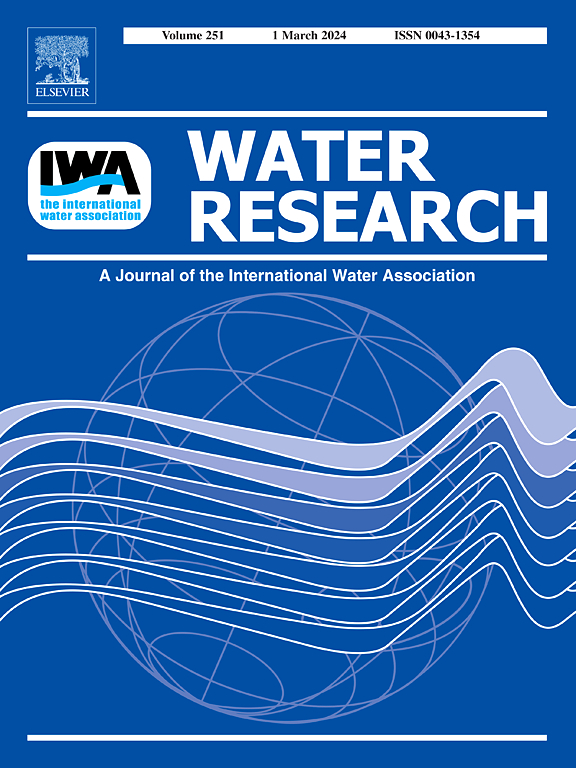Impact of 2D and 3D factors on urban flooding: Spatial characteristics and interpretable analysis of drivers
IF 12.4
1区 环境科学与生态学
Q1 ENGINEERING, ENVIRONMENTAL
引用次数: 0
Abstract
Urban flooding poses a serious threat to both the ecological environment and human society. Previous studies identified natural and anthropogenic factors as contributors to urban flooding, but little attention has been paid to the influence of urban horizontal and vertical factors. To address this gap, we conducted a comparative analysis of the patterns in spatial distribution of urban flooding in two megacities in eastern China (Beijing and Guangzhou). We then used Pearson's correlation to investigate the associations between flooding events and multiple influencing factors. Finally, two scenarios were designed to quantify the relative contributions of each driver using the Light Gradient Boosting Machine (LightGBM) and Shapley (SHAP) interpretable models. The results show that: (1) urban flooding points in Guangzhou and Beijing are predominantly clustered in central areas, with mid-rise and high-density buildings presenting the highest flood risk. (2) in the base scenario, Annual precipitation (AP) is the primary influencing factor for urban flooding in both Beijing and Guangzhou. However, in the enhanced scenario, the addition of 2D and 3D (two-dimensional and three-dimensional) metrics shifts the main drivers to factors like Aggregation index (AI), Patch density (PD), and Building density (BD), significantly impacting urban flooding. This study highlights the critical impacts of horizontal and vertical urban structures and layouts, emphasizing the need for comprehensive urban planning and design strategies to effectively mitigate flood risk. It also provides new perspectives on urban flood risk management.
二维和三维因素对城市洪水的影响:空间特征和驱动因素的可解释性分析
城市洪涝灾害对生态环境和人类社会都构成了严重威胁。以往的研究确定了自然和人为因素是城市洪涝的影响因素,但很少关注城市水平和垂直因素的影响。为了解决这一差距,我们对中国东部两个特大城市(北京和广州)的城市洪水空间分布模式进行了比较分析。然后,我们使用Pearson相关来研究洪水事件与多个影响因素之间的关系。最后,设计了两个场景,使用光梯度增强机(LightGBM)和Shapley (SHAP)可解释模型来量化每个驱动因素的相对贡献。结果表明:(1)广州、北京城市洪涝点主要集中在中部地区,中高层和高密度建筑的洪涝风险最高;(2)在基本情景下,年降水量(AP)是北京和广州城市洪涝的主要影响因子。然而,在增强场景中,2D和3D(二维和三维)指标的增加将主要驱动因素转变为聚集指数(AI)、斑块密度(PD)和建筑密度(BD)等因素,显著影响城市洪水。本研究强调了水平和垂直城市结构和布局的重要影响,强调了综合城市规划和设计策略的必要性,以有效降低洪水风险。为城市洪水风险管理提供了新的视角。
本文章由计算机程序翻译,如有差异,请以英文原文为准。
求助全文
约1分钟内获得全文
求助全文
来源期刊

Water Research
环境科学-工程:环境
CiteScore
20.80
自引率
9.40%
发文量
1307
审稿时长
38 days
期刊介绍:
Water Research, along with its open access companion journal Water Research X, serves as a platform for publishing original research papers covering various aspects of the science and technology related to the anthropogenic water cycle, water quality, and its management worldwide. The audience targeted by the journal comprises biologists, chemical engineers, chemists, civil engineers, environmental engineers, limnologists, and microbiologists. The scope of the journal include:
•Treatment processes for water and wastewaters (municipal, agricultural, industrial, and on-site treatment), including resource recovery and residuals management;
•Urban hydrology including sewer systems, stormwater management, and green infrastructure;
•Drinking water treatment and distribution;
•Potable and non-potable water reuse;
•Sanitation, public health, and risk assessment;
•Anaerobic digestion, solid and hazardous waste management, including source characterization and the effects and control of leachates and gaseous emissions;
•Contaminants (chemical, microbial, anthropogenic particles such as nanoparticles or microplastics) and related water quality sensing, monitoring, fate, and assessment;
•Anthropogenic impacts on inland, tidal, coastal and urban waters, focusing on surface and ground waters, and point and non-point sources of pollution;
•Environmental restoration, linked to surface water, groundwater and groundwater remediation;
•Analysis of the interfaces between sediments and water, and between water and atmosphere, focusing specifically on anthropogenic impacts;
•Mathematical modelling, systems analysis, machine learning, and beneficial use of big data related to the anthropogenic water cycle;
•Socio-economic, policy, and regulations studies.
 求助内容:
求助内容: 应助结果提醒方式:
应助结果提醒方式:


